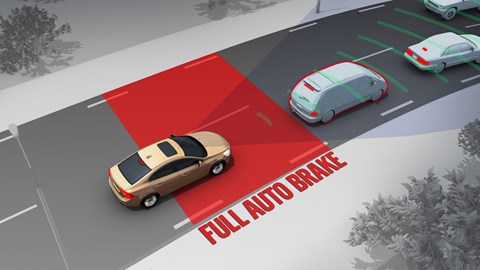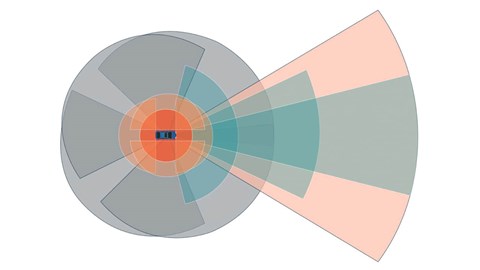Think of autonomous technology, and you’ll probably think of far-out concepts or driverless cars without steering wheels – but many vehicles on the road today already feature safety systems which can be considered autonomous. Autonomous emergency braking or AEB for short is one of the most popular and uses elements of driverless tech to keep you safe. Here’s what you need to know about it.
What is it?
Simply put, AEB automatically slows the car before a possible impending collision – and it’s done without the driver’s input. AEB uses a radar to calculate the distances and closing speed between your car and any potential obstacle – and if suitable driver input is not detected, it’ll take over.
In this way, the severity of any impact can be reduced, and in a best-case scenario, the collision can be avoided altogether.
Could that get annoying?
Autonomous emergency braking represents the last resort when it comes to accident avoidance; most cars also have collision warnings that’ll sound and flash if the car things you’re in danger of hitting something – and these will happen well before AEB kicks in.
For example, you’ll be alerted if you leave braking a little late when behind another car, or if traffic slows abruptly on the motorway.

Is it strong?
AEB is the last resort for avoiding a collision, and with that in mind the braking force involved tends to be relatively strong. Still, the exact amount of force will depend on things such as the closing speed between the car and hazard.
Is autonomous emergency braking worth it?
AEB is standard on many vehicles, but it’s also available as an optional extra on most others and cost anything from £200 and £2000 depending on the car you’re speccing it with – or the wider pack it’s included in.
Whatever the cost, it’s something that’ll almost certainly save you from a nasty collision, or an impact at least. It’s not to be relied on – that’s up to you – but it’s a useful safety net for the times you’re fiddling with A/C, or another motorist potentially causes an accident. According to a 2015 study EuroNCAP and Australasian NCAP AEB leads to a 38% decrease in real-world rear-end crashes.

Most premium cars will come with the feature as standard, and changes to safety awards mean that’s only going to continue: Euro NCAP, the leading safety organisation, won’t give a five-star safety rating to any car without AEB.
What about adaptive cruise?
More sophisticated cruise control systems can keep maintain a distance to the car in front, once again my using the same radar and Lidar tech used in AEB system. Like AEB inputs such as braking and acceleration are managed without the driver’s inputs, and therefore could be considered semi-autonomous. In theory, most cars with adaptive cruise control will also have AEB, as it’s the same technology used in a far more relaxing, less stressful way.